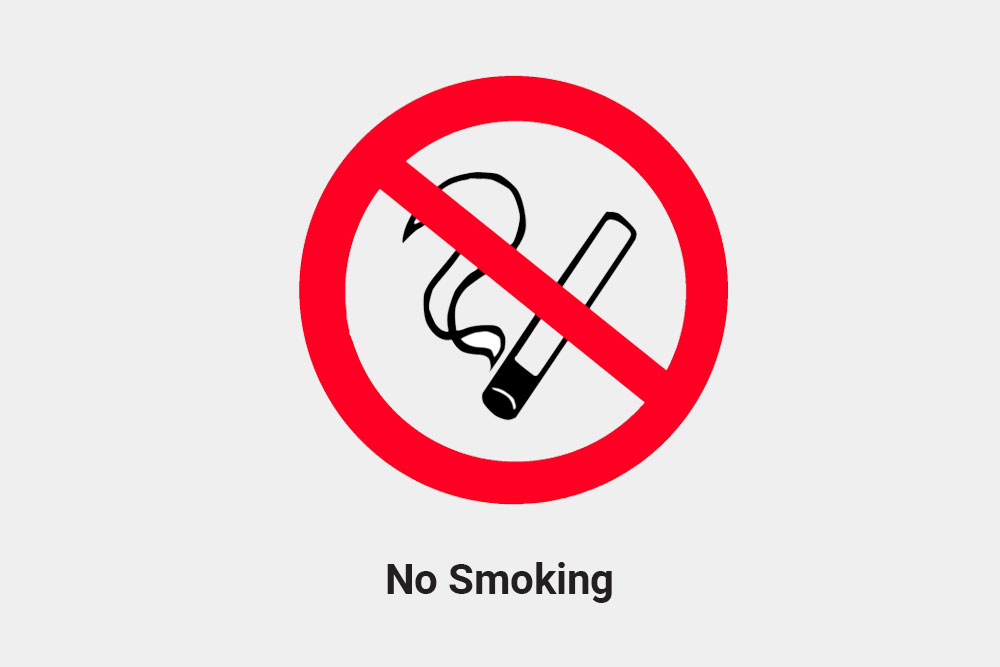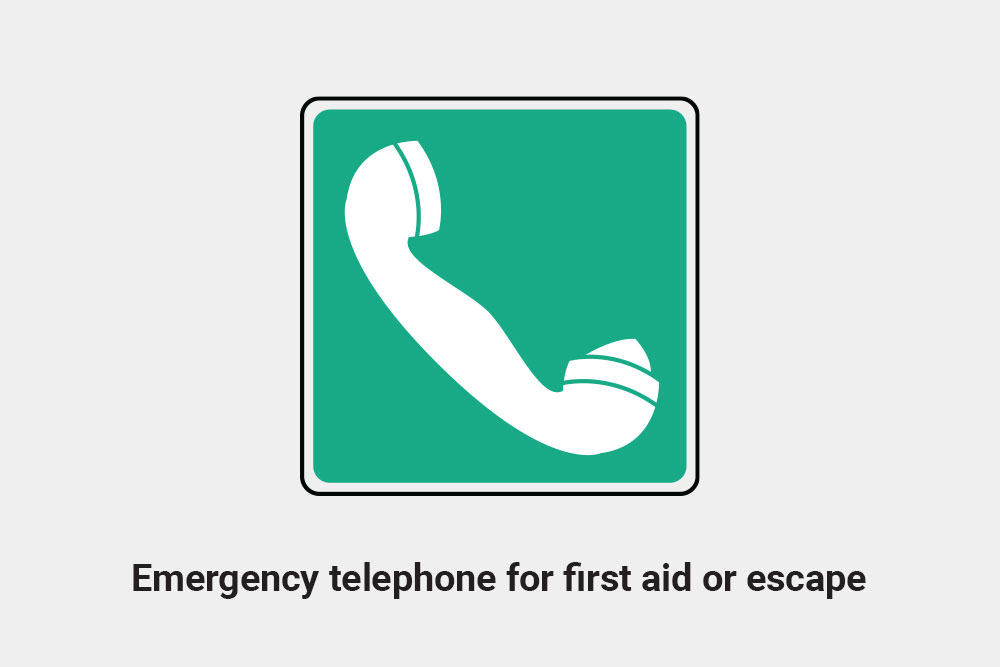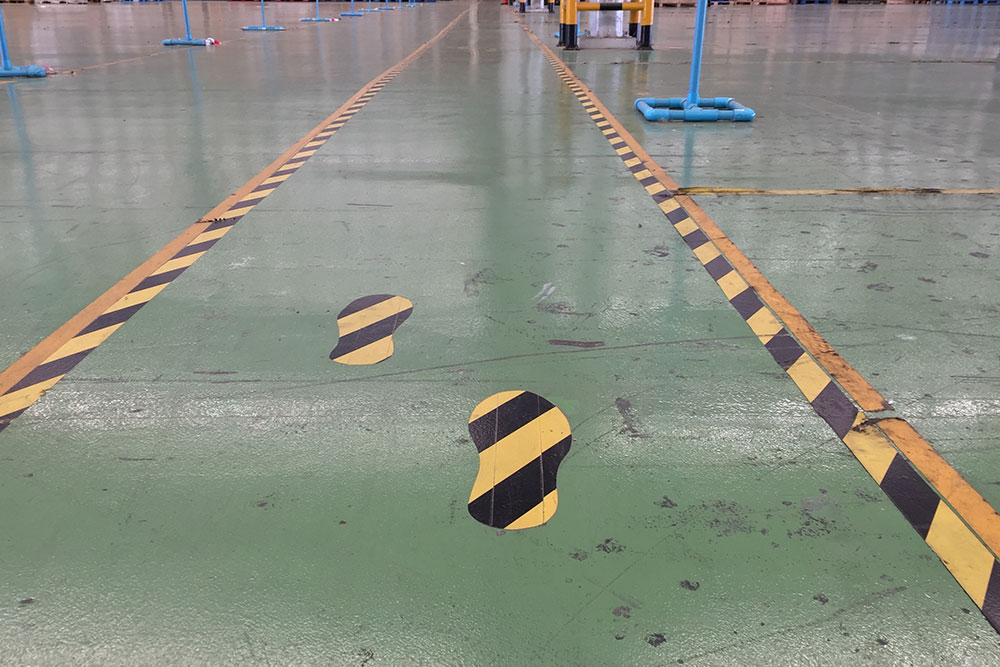
Wherever you go, whatever you do, there’s bound to be a warning sign somewhere.
Warning signs alert us to hazards or instruct us on how to avoid harm. They’re an essential health and safety tool. They are used for everything from alerting us about dangerous chemicals to letting us know that there’s a bad-tempered dog behind a gate.
We’ve compiled a short guide on the types of hazard signs you might encounter. This information can help you stay safe and ensure your workplace complies with health and safety laws.
Common Types of Hazard Signs in the UK
The very first warning sign was designed in 1908 by the West London Automobile Association. From those humble beginnings, we now have many types of hazard signs that keep us informed of everything from fire safety to construction site hazards.
Listing every kind of warning sign in one article would be impossible. So, to make things simple, we’re focusing on the four most common warning signs:
- Red Prohibition Signs
- Blue Mandatory Signs
- Yellow Warning Signs
- Green Safe Condition Signs
Red Prohibition Signs
Signs that tell you ‘don’t do this, don’t do that’ are known as prohibition signs. Prohibition signs alert us that engaging in certain behaviours in specified areas can increase the risk of harm. Prohibition signs feature red bands on white backgrounds with black pictograms that depict an image of the prohibited behaviour. The ‘no smoking’ sign is the most easily recognisable example of a prohibition sign.

Blue Mandatory Signs
In contrast, the mandatory blue signs tell you what you must do. These signs have blue backgrounds with white text and may feature pictograms. Blue mandatory signs are always instructional. They advise us to do things like wear safety glasses or other types of Personal Protective Equipment (PPE), close fire doors, or drive slowly.

Yellow Warning Signs
If there is a severe health hazard in the area, you should also see a yellow warning sign. These signs alert people to environments or substances that have the potential to cause serious harm.
Usually, a yellow warning sign will have a white background, a yellow triangular symbol, and a black border. There may be a pictogram in the triangle, or there may simply be an exclamation mark to alert you to a hazard. A yellow box with black text beneath the triangle often provides more information on the specific hazard.
Yellow warning signs are used for a wide range of purposes, from alerting us to the presence of corrosive chemicals to reminding us to watch our step to advising us that there is a particularly unfriendly bull in a field.

Green Safe Condition Signs
The friendliest type of warning sign is the green, safe condition sign. These signs let us know that there is something in the area that can help us in an emergency. Green safe condition signs are used to alert us to emergency exits, doors, or the location of first aid equipment.

A green, safe condition sign will have white text on a green background and may also have a white pictogram or a symbol. A first aid kit, for example, may have the words ‘first aid’ written under a white cross.
Where Should You Place a Warning Sign?
Ideally, a warning sign should be placed somewhere easily visible and close to the risk area, equipment, or location it is alerting us to. For example, a sign instructing people to wear hard hats should be placed before anyone enters an area with falling debris.
Warning signs should not be obscured by any type of obstructions. Equipment or foliage should not cover them up and they should be kept free of grime and dirt. Placing a warning sign at eye level is recommended, usually about one and a half to two metres from the floor. In some cases, such as in a warehouse, warning signs may also be placed on the floor.

Are Warning Signs Required by UK Law?
In short, yes. It is a legal requirement to have safety warning signs placed in appropriate areas in every workplace. Proper warning signs in the right areas are among the UK’s most basic health and safety legislation requirements.
Two main pieces of UK legislation cover warning signs: the Health and Safety (Safety Signs and Signals) Regulations 1996 and the Control of Substances Hazardous to Health Regulations (COSHH).
The Health and Safety (Safety Signs and Signals) Regulations 1996 mandate that employers install safety signs to alert people to risks that other means cannot eliminate. COSHH warning signs must be used wherever substances that can cause harm or death are present.
The Health and Safety Executive (HSE) investigates breaches of these health and safety laws. An HSE inspector can initiate legal proceedings against a company if the business has not complied with warning sign regulations.
The penalties for breaches of health and safety laws can be severe. You could have to pay a considerable fine alongside associated court costs. Fines issued by the HSE can be unlimited and are dictated by the nature of the breach. On top of that, health and safety breaches are considered to be criminal offences. So, there is also the possibility of a charge that leads to a prison sentence.
Ensuring you have the right workplace hazard signs is much easier and safer.
Where to Learn More About Warning Signs
Warning signs are here to stay. Understanding the required signs will help you avoid penalties and keep your workplace safe.
You can learn everything you need to know about safety signs – and workplace safety in general – by taking one of our HR Compliance Courses.
These courses are available online, can be taken in bite-sized segments whenever you like, and are accredited and certified.






















































































































































































































































































































































































































































































































































